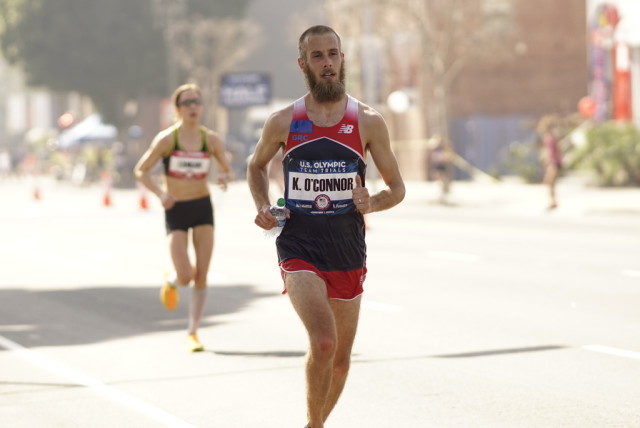
Some of the bags Kieran O’Connor took with him to Los Angeles were packed with racing shoes and a uniform to wear in Saturday’s U.S. Olympic Marathon Trials. The others were stowed under his eyes, after his wife’s early delivery three days before the race gave him their firstborn daughter and the peace of mind that she would not be going into labor while he was out of town.
On Sunday he flew home to his family with a hard-earned 24th place finish in 2:21:37, less than a minute off of his best marathon time run in much cooler conditions, and the knowledge that on the day that effort mattered, he was tougher than most of the field.
Ahead of schedule
His wife, Zyra, woke him at 2 a.m. Wednesday, shortly after her contractions started, two weeks before her due date.
“As soon as she was admitted, she told me I’d have to find another ride to the airport, ” O’Connor said. “I told her to hold on a minute, but she kept telling me, ‘you’re getting on that plane.’ She’s my biggest supporter.”
More Trials coverage
After about 45 minutes of pushing in the early afternoon at Georgetown University Hospital, the “textbook delivery ” was over and O’Connor, 28, had an hour with his daughter Caoimhe (pronounced “Kiva”) before he ran off to pick up his new uniform, pack at his Arlington home and bring some food back to the hospital before catching a few hours of light sleep. The airport shuttle picked him up a little after 4 a.m. at the emergency room entrance.
The couple knew, once O’Connor, 28, hit the half marathon qualifying mark at the Rock ‘n’ Roll Philadelphia Half Marathon Oct. 31, that the timing would be tricky with Zyra’s pregnancy, but felt that more likely than not they’d be fine.
“I thought she was going to come when she was supposed to, or later,” O’Connor said. “Honestly, I felt pretty good about it. I’m just so relieved she came when she did. It wasn’t the best timing but it could have been a lot worse.”
It helped that two of Zyra’s friends had planned to visit this weekend, just in case she went into labor while Kieran was out of town.
“I slept on the shuttle, I slept on the plane,” he said. “When we got to the hotel, I took a four-hour nap. Then we went to the dinner Thursday night and I slept another nine hours after that.”
All competition
Though O’Connor was primed to improve on his PR of 2:20:47, the forecast was going to make that a substantial task. The heat, forecast for the mid-60s around the 10:06 a.m. start, was only going to get worse over the next two hours, and runners would spend most of the 26.2 miles running in the sun.
They were the kind of conditions an uninformed weatherman would call ‘perfect’ for a marathon.
So time was out the window, as it would be for the entire field. O’Conner accepted that early and got even more excited about his chances.
“I told my family that my definition of success was going to be finishing in the top 25,” he said. “You know, why not? Why can’t I be top 25? If I ran tough, I knew I could do it.”
His qualifying time of 1:04:38 from Philadelphia seeded him at 145th place of the 169 men who declared for the race. But this wasn’t a time trial and the meritocratic method of selecting an Olympic team based on on the three top finishes meant racing ability, not just flat-out seed, was paramount
“It was a matter of competition,” O’Connor said. “Pure competition. I monitored the clocks for five miles to make sure I got in a rhythm, but after that I didn’t look at them. I just didn’t care.”
He hung on to one of the chase packs for two of the four six-mile loops running south from downtown L.A. to the University of Southern California and then back north, winking and giving thumbs ups to spectators.
“You could tell he was loose and taking it easy early on,” said Jerry Alexander, O’Connor’s Georgetown Running Club coach. “I saw him look uncomfortable once, at mile 21, but that was it.”
O’Connor was in 46th place when he made his break with eight miles to go and started to move up on his own. He passed five people in mile 18, four in both 19 and 20, then the places were harder to come by.
“People had really strung out, so just kept on passing them,” he said. “Men, women, there was always someone ahead of me.”
He was in 29th place at the start of the final loop, continuing to feast on the victims of attrition, and there were many. Of the 167 runners who started the race, 62 dropped out, including 2008 Olympic Marathoner Dathan Ritzenhein.
“I knew I just had to keep grinding for six more miles,” he said. “There’s nothing else I had to do, just keep grinding. With about three miles to go, I thought, ‘I just have to finish up this loop and I can go home and see my daughter.'”
His mile splits were slowing, but not as fast as others’.
That was about when three people passed him and put a little doubt in his mind. It was the first time he had fallen back in the standings since he made his move at mile 16, but he made up for it as the race went on. With a little more than one mile to go, Alexander told him he was in 26th, and O’Connor saw his targets getting closer.
Tim Ritchie, the 22nd ranked runner, was ahead of him, and O’Connor moved to the other side of the road.
“I had to sneak past him and not give him a chance to latch on,” he said. “If he came with me, I’d have been in trouble, because he’s a much faster runner than me.”
Ritchie didn’t go, and once O’Connor was clear, he focused on the last man ahead of him and surged for home.
Warm reception
While most of the field was bemoaning the high predicted temperatures in the days leading up to the race, O’Connor saw an opportunity. Despite having only about 48 hours to acclimate to the heat, he was confident in his natural resistance to it.
“Maybe if I had been somewhere warm for a few weeks to get ready, it might have made a little difference, but I was fine without it,” he said.
His 2012 Boston Marathon finish, 22nd on a day when temperatures hit the mid-80s, gave him a lot of confidence. Coming from below-freezing temperatures in D.C. didn’t bother him either. He spent early 2012 training in New York City and likewise had no heat acclimation prior to Boston.
“I was less nervous for this race than any race I’ve run for the past four or five years,” he said.
Alexander echoed that.
“That was what jumped out at me, how excited he was to run in the heat,” he said. “We talked about how there were going to be guys quitting out there. On the last lap they’re thinking about what they have to do and deciding it’s not worth it and they’ll go in the tank.”
It was confidence that Alexander developed within a few months of O’Connor joining the Georgetown Running Club in 2013. At the USATF Club Cross Country Championships in Bend, Ore., O’Connor, who had never run a track race in his life and skipped running cross country while at Notre Dame, finished 50th on a rugged course that left many pedigreed runners staggering to the finish line.
“I could see he was the kind of guy who was going to run the entire race, not leave any opportunities out there,” Alexander said. As for Los Angeles, “Obviously he was in phenomenal shape. The mileage, his workouts were fantastic, it couldn’t have been a better buildup, but the mental part preparation is where he made the difference. There couldn’t have been more than five guys ahead of him who were better prepared mentally, he couldn’t have done better for his ability level right now.”
Any question of O’Connor wilting were laid to rest three weeks prior, when he spent the Saturday during Snowzilla running most of his 24.5 miles under the Whitehurst Freeway in Georgetown, a roughly kilometer-long stretch.
“If you’re going to spend 24.5 miles running under Whitehurst Freeway, what do you have to lose at this point?” Alexander said. “He’s already playing with house money, the odds of him being here a year ago were probably 20-to-1.”
Well aware a top-three finish was unthinkable, O’Connor approached this race as his Olympics, but approached it with the same looseness that served him well in the opening miles.
“If I had been just 20 spots higher, I’d have been one spot off of the Olympic team,” he said.
While not going that far, Alexander was confident that O’Connor’s performance was a strong baseline from which to begin even more improvement.
“We’re looking for better in four years,” Alexander said.
The O’Connors will have plenty of leeway to schedule Caoimhe’s fourth birthday party around the race.
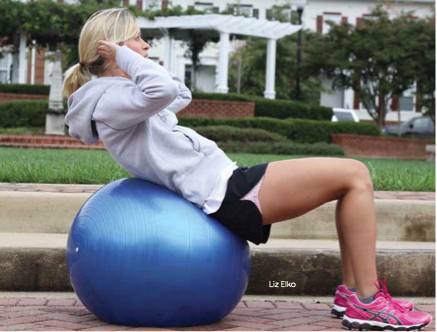
Everything is supposed to hurt during a marathon.
Right?
That’s what Kate Volzer told herself in Philadelphia. Her legs were tired, back was sore, hip ached, but it all seemed like a temporary price to pay for the race she was running, the race of her life.
“My hip had been hurting for a month, but given the mileage I was running, it made sense something would be nagging,” she said.
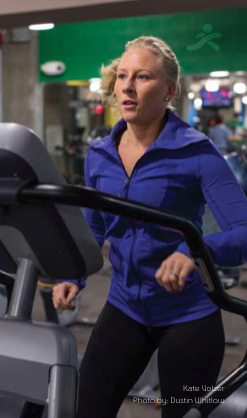
All of those miles paid off — she brought a 2:53 home to Arlington and enjoyed a few days off before she rejoined her GRC Racing teammates and Potomac Runners. But when she headed out the door to run again, she greeted a pain far worse than she had felt in the city of brotherly love.
Her physical therapist assured her it was a hamstring injury, at worst a tear, and it would heal with rest. A few doctors said that. For months, she followed the frustrating cycle of testing and resting, finding herself an unwitting initiate of a large distance running fraternity. The injured. Delta-Ow-Docta.
It starts with change. Something more than the body is ready to handle. Too much new mileage, too many work- outs, trusting too blindly in faddy running shoes. The averages say it’s going to catch up with everyone eventually, everyone who pushes themselves to get faster. Sometimes a mild injury in one place can cause a form change that has musculoskeletal repercussions, like the plantar fascitis that help fell the erstwhile indestructible Michael Wardian.
He was absent from race results for the first time in more than 10 years in 2012. After thousands upon thousands of miles, his body didn’t have an answer, and in August he was sidelined with five pelvic stress fractures. “The longest I’ve ever taken off was a day here or there when I’m traveling,” he said. “It feels like something’s missing.“
Perhaps it’s the 110 miles a week, or the ability to run the Houston Marathon the morning after competing in the U.S. Olympic Marathon Trials since he was already in town.
He attributes some of his injury to lack of sleep, because he and his wife take turns watching their son, Grant, who has recently suffered from seizures, which are under control now. With more rest and recovery, he hopes to be running in late October or early November. Though he targets the Kansas City North Face Endurance Challenge, he’ll be happy to race the local Kinhaven 5k, which benefits his sons’ school.
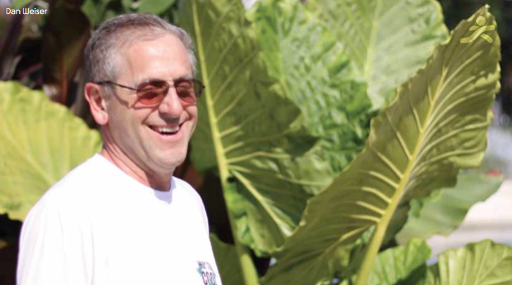
In the meantime, he bikes, including a one-day trip down Skyline Drive, to keep himself in shape. He’s not exactly sitting on the couch watching television.
“Now I feel like I’m a real runner,” he said. “Everyone else I know has dealt with an injury. I’m putting my time in. This is a blip on the radar.”
“Every time I’d go out for a run, I’d cross my fingers and say ‘please don’t hurt, please don’t hurt…’”
Doctors advised Volzer to find a new sport, take a corti- sone shot or elect for surgery, but it was too early for her to go under the knife. She took total rest for a few weeks and gave it another shot.
No dice. This time, her right hip joined in.
Her doctor suggested the body’s symmetry was too uncanny to ignore. Further testing confirmed that her right labrum was also torn.
“I had already made the decision to go with surgery on the left hip, so by this point I figured I might as well take care of everything, rather than start up again and be forced to rehabilitate all over again.”
So she was sliced up twice in August — left, then right, for each labrum to be repaired and irritating bone to be shaved down. She’s looking at a late November return to running. In the meantime, though, she faces some existential questions.
“When you are at a certain level of running and then you can’t run due to injury, you tend to feel like you are no longer an elite runner because you aren’t technically running,” she said. “So if you aren’t the elite runner that you were and so badly want to be again, who are you? Who am I when I am injured? Am I still a runner?”
Liz Greenlaw’s body has given her almost two years’ worth of reasons to stop running.
Riding high on a string of great races in early 2011, she was looking ahead to that fall’s Marine Corps Marathon. A stress fracture took her out, and she discovered she, like Volzer, had torn a labrum and would need surgery. She recovered from her fall 2011 procedure and gingerly ran again in the spring, gaining confidence in fun races, running under a family alias. She was primed for Marine Corps, and her fitness was coming along, until she felt her pelvis shift during a Capital Area Runners workout. She took time off and tried again to run for an hour in August. Afterward she knew she had to beg down to the 10k. Now, with another stress fracture diagnosed, she can just wait and start over.
But she will start over. She saw the course toward her potential with some great races and knew that wasn’t “it.” “I have total confidence I can get back to that,” she said. “There’s more running for me to do.”
She keeps her age group award from the 2009 Marine Corps race framed above her bedroom door so she sees a reminder of better times whenever she walks out
“I remember how it felt to run healthy. I miss the adrenaline. I replay old races in my head, tough, challenging ones that ended up to be rewarding.”
When Keith Kauffman works with injured runners, he keeps them focused on the present.
“There’s a temptation to get caught in the past or the future,” he said. “The regret, the what ifs. Athletes aren’t the best at staying patient.”
He’s a sports psychologist with offices in Alexandria and Washington who also works with Catholic University’s sport psychology research lab.“Confidence is a tenuous thing when your body fails you,” he said. “There’s the fear of re-injury, concerns about lost fitness and the motivation to try and do too much when they get back.”
He said many injured runners show depressive symptoms, in part because of their separation from their ex- ercise outlet, but more because they are missing out on what they enjoy, which includes social time for many. As a result, injuries can be harder on high school athletes. “Their teams are often their primary social group,” Kaufman said. “Injured time is time away from their friends and less attention from their coach.”
College student-athletes carry the added complication of losing a scholarship when mental burnout and extended injury lead them to walk away. Post-collegiate runners, though, face different concerns, especially as they age.
“I think knowing and being able to accept when a window has closed are potentially huge challenges for athletes, particularly when their identities have long been tied to their sport,” he said. “This is why an injury that is career-threatening could be so devastating,” because they have to face the limitations that their body puts on them. “They may be left with an unsettling feeling of, ‘what now?’”
Runners aren’t doomed to lives of injury and frustration, though. Through all the discipline and routine rehab, there’s some hope. Dan Weiser took his first significant run in five months on Sept. 23, 2012. His poorly-aligned kneecaps deteriorated to the point where running was out of the question and climbing stairs or even hopping over curbs was a problem. He didn’t deal with a draconian physician, though.
“My surgeon (John Klimkiewicz) never says ‘don’t run,’ but always works with me to find ways to keep active,” he said.
Weiser races a range of distances from 400 meters to 50k. Variety is not as enticing if he isn’t wearing the rubber off of his shoes.
“Weights, stretching and swimming don’t do it for me,” he said, noting that biking also hurts his knees. “I miss the camaraderie of other runners.”
As a coordinator for DC Capital Striders’ evening Mall runs, he remains at the center of activity for the popular group runs. Now, he’s on his way back.
His physical therapist, Alan Brodnick, had him try alternating walking and light running for a minute at at a time. He increased it slowly, held back when necessary.
“I felt great and wanted to keep running, especially as other runners passed me,” he said. “I wanted to end the run feeling great, not in any pain, so that was my motivation for staying at five minutes.”
Lindsay Wilkins couldn’t do any cross training when she was hurt. In spring 2009, she tripped and tore the ham- string away from her right “sit bone.” It wasn’t something doctors normally saw in runners; rather, it was more of a hockey or water skiing injury. For six weeks, she was trapped in a hip cast. She could stand and lie down. No sitting. And certainly no Pacers racing team workouts. Traveling meant lying in her hatchback as her husband Brian drove her to doctor’s appointments.
“It was a very difficult adjustment, but that surgery was the only way I’d be able to run competitively again,” she said. Removing the cast at the end of six weeks was liberating, but the atrophy in her leg forced her to re-learn how to walk. Her subsequent stab at running was gradual.
“It was like I had never run a step in my life,” she said. After more than a year, she felt something click. Unlike the well-documented fracturing of a bone or snap of a tendon, instead she felt like a runner again, the kind who was once 10 seconds away from winning a marathon two years prior. She was back, and it was time to see what “back” meant.
Her shot at the 2011 Chicago Marathon said it all. On a day much warmer than her 2008 Marine Corps runner up, she finished a mere minute off of her PR.
The whole process made her much more mentally tough.
“Feeling bad in a race is nothing compared to the misery of not being able to run,” she said.
Volzer has been careful in the weeks following surgery. She’s taking her rehab seriously and her cross training lightly.“My personality is a little pessimistic,” she said. “I’m always worrying about worst-case scenarios, and I’ve wondered at times what I will do if I start running again and the surgeries didn’t fix anything.”
She said even as the months piled on without an answer, she never gave up on running.
“I never lost hope, I got upset when I had a setback, but I never thought I wouldn’t be running again someday.” While she is waiting to resume her old life, Volzer can go to happy hours and meet up with friends after work instead of hitting the track. But that doesn’t mean it’s not on her mind. Or that she doesn’t miss her GRC racing team and Potomac Runners training partners.
“I daydream about when I run again, all the time,” she said. “I don’t care how slow I’ll be, I know I’ll be smiling the whole time.”
Not bad for a self-described pessimist.
This article originally appeared in the November/December 2012 issue of RunWashington.


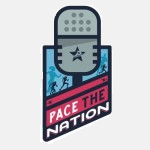 Hear Kieran and Zyra talk about the race and new parenthood on Pace the Nation
Hear Kieran and Zyra talk about the race and new parenthood on Pace the Nation